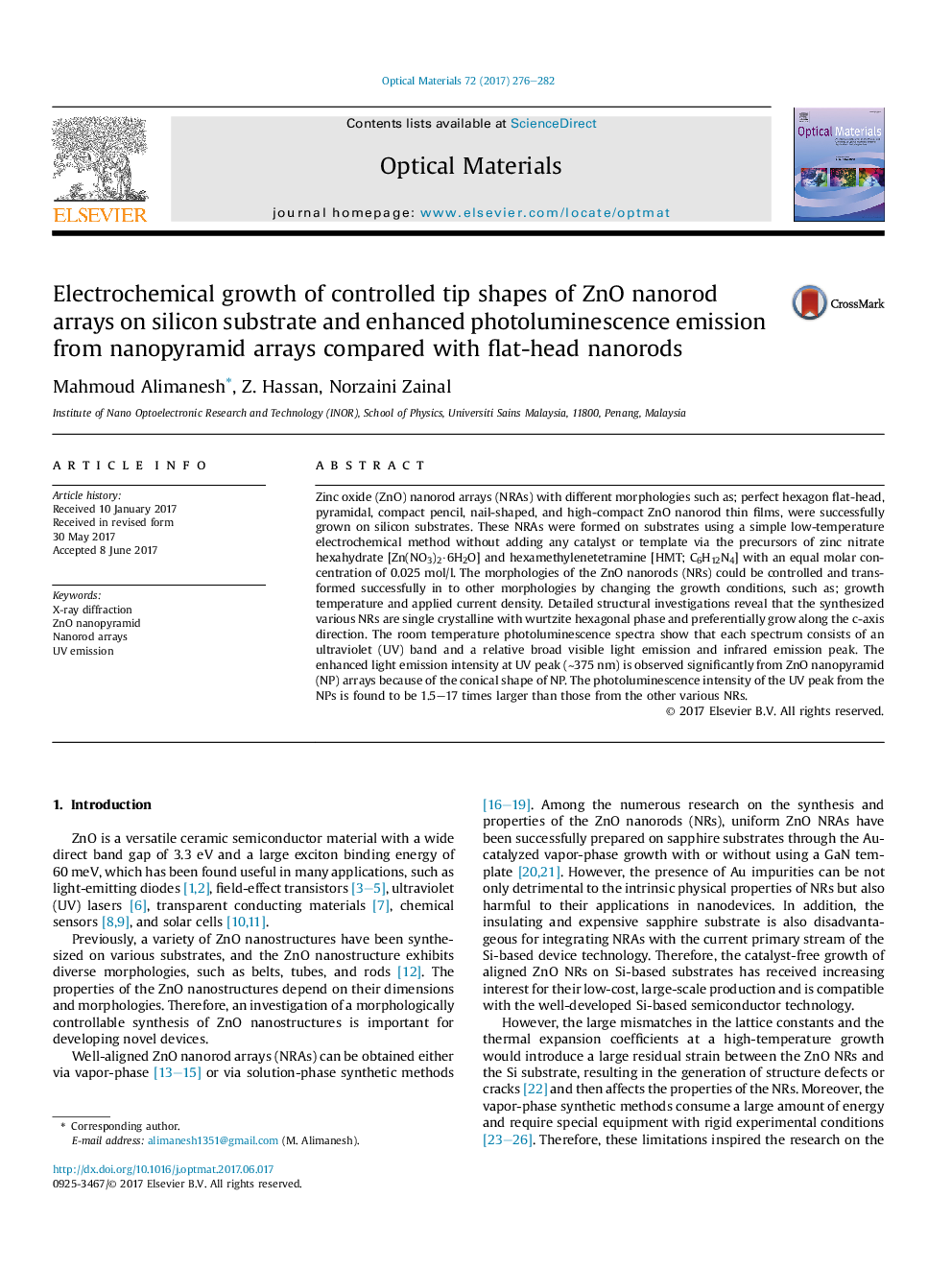| Article ID | Journal | Published Year | Pages | File Type |
|---|---|---|---|---|
| 5442471 | Optical Materials | 2017 | 7 Pages |
Abstract
Zinc oxide (ZnO) nanorod arrays (NRAs) with different morphologies such as; perfect hexagon flat-head, pyramidal, compact pencil, nail-shaped, and high-compact ZnO nanorod thin films, were successfully grown on silicon substrates. These NRAs were formed on substrates using a simple low-temperature electrochemical method without adding any catalyst or template via the precursors of zinc nitrate hexahydrate [Zn(NO3)2·6H2O] and hexamethylenetetramine [HMT; C6H12N4] with an equal molar concentration of 0.025 mol/l. The morphologies of the ZnO nanorods (NRs) could be controlled and transformed successfully in to other morphologies by changing the growth conditions, such as; growth temperature and applied current density. Detailed structural investigations reveal that the synthesized various NRs are single crystalline with wurtzite hexagonal phase and preferentially grow along the c-axis direction. The room temperature photoluminescence spectra show that each spectrum consists of an ultraviolet (UV) band and a relative broad visible light emission and infrared emission peak. The enhanced light emission intensity at UV peak (â¼375 nm) is observed significantly from ZnO nanopyramid (NP) arrays because of the conical shape of NP. The photoluminescence intensity of the UV peak from the NPs is found to be 1.5-17 times larger than those from the other various NRs.
Related Topics
Physical Sciences and Engineering
Materials Science
Ceramics and Composites
Authors
Mahmoud Alimanesh, Z. Hassan, Norzaini Zainal,
